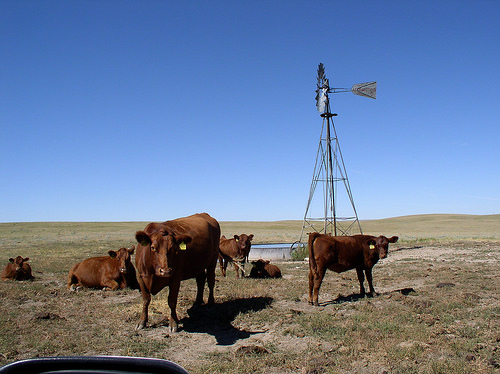Farmers are reminded that they must have a Highly Erodible Land Conservation and Wetland Conservation Certification (AD-1026) on file at their local Farm Service Agency office in order to receive support on their premium payments for federal crop insurance. Producers who have not filed an AD-1026 form must do so by June 1, 2015. When a farmer completes the AD-1026, FSA and NRCS staff will outline any additional actions that may be required for compliance with the provisions. The Risk Management Agency, through the Federal Crop Insurance Corporation (FCIC), manages the federal crop insurance program that provides the modern farm safety net for American farmers and ranchers. Learn more.
Producers Reminded to File Forms for Crop Insurance Premium Support
Assistance Available to Producers for Fruit Losses
Producers who did not have access to crop insurance yet suffered losses to bush or tree fruit crops due to frost or freeze during the 2012 crop year may be eligible for assistance. The Noninsured Crop Disaster Assistance Program provides supplemental payment to producers who were affected by weather damage or other adverse natural occurrences. Enrollment in the program opened July 22 and continues through Sept. 22. Producer must contact their local FSA county office to find if they are eligible to apply. Learn more or locate your FSA county office.
Researchers Use Corn Grit Instead of Herbicides to Blast Weeds
Agricultural researchers have found a new way to blast weeds without using pesticides. The Propelled Abrasive Grit Management (PAGMan) system — designed by USDA Agronomist Frank Forcella along with university researchers — is a tractor-mounted system that uses compressed air to blast particles of grit that shred weeds. The grit is made up of dried corn cobs. Further trials may confirm the system’s potential to help organic growers manage within-row infestations of weeds that have sprouted around the bases of corn, soybeans and other row crops. Learn more.
National Farmers Market Week is Aug. 3-9
Agriculture Secretary Tom Vilsack has declared Aug. 3-9 as National Farmers Market Week. Throughout the week, USDA will celebrate the thousands of farmers markets across the nation, honor the farmers that make them possible and celebrate the communities that host them. The week recognizes the important role that farmers markets play in the agricultural and food economy. USDA officials will be at farmers market locations across the country throughout the week. Learn more.
Two Week Remain to Submit County Committee Nomination Forms
Only two weeks are left for farmers and ranchers to select themselves or others as candidates to sit on local FSA county committees and help make important agricultural decisions. Nominations must be submitted by Aug. 1. Members of the committee deliver FSA farm programs at the local level and make decisions needed to administer the programs in their counties. Those who would like to submit a nomination may download forms online (in English or Spanish) or visit their local FSA county office. Learn more.
Funding Available for Organic Producers to Get Certified
With demand for organic products surging, the U.S. Department of Agriculture announced $13 million in funding to famers and rancher for organic certification cost-share assistance. This will help make organic certification more accessible for small producers. “We need to make sure that small farmers who choose to grow organic products can afford to get certified,” said Agriculture Secretary Tom Vilsack. Certification assistance is available to all 50 states through the USDA Agricultural Marketing Service. Learn more.
Honeybee Operation Gets Chance to Rebuild Following Disaster

Loveless uses smoke to calm the bees when he opens the boxes for inspection. Smoking the bees allows the beekeeper to work in the hive while the colony’s defensive response is interrupted.
By Cassie Bable, FSA Public Affairs Specialist
Larry Loveless of Gillespie, Ill., works full-time at a factory by day, but spends his evenings and free time beekeeping.
The harsh winter of 2013 brought devastating losses to many livestock producers, including beekeepers. Loveless lost more than half of his colonies due to several days of sub-zero temperatures. He started with 20 colonies and was down to only seven by the end of the winter.
“I’ve lost a few colonies here and there, but I’ve never experienced this horrific of a loss,” said Loveless, whose hives were already at a disadvantage because of last year’s drought. Continue reading
StrikeForce Takes Lead in Georgia
Preserving Farmland Through Conservation
Drought Assistance Helps Nebraska Rancher Get Back on Track

Like many ranchers suffering from the effects of drought, LaNelle Martin paid $5,000 more for high-priced hay and feed to keep her small operation running.
By Tanya Brown, FSA Writer/Editor
When enrollment opened for the USDA disaster assistance programs this April, LaNelle Martin was one of the first to sign up at the Kimball County FSA office in Nebraska.
“After two years of a severe drought our pastures are limited and haven’t grown,” said Martin. “We need the pasture to support our cattle and the cost of feed and hay is pricey.”
Nebraska, along with portions of the southern and western parts of the United States has suffered one of the longest and most devastating droughts in history. Kimball County’s worst seasons were 2012 to 2013, when the area was named a primary natural disaster area by Agriculture Secretary Tom Vilsack. This year, some snow and spring rains provided a little relief, “But as most of our producers say, we are only four to six weeks away from another disaster,” said Patricia Perry, FSA program technician in the Kimball County office. Continue reading





